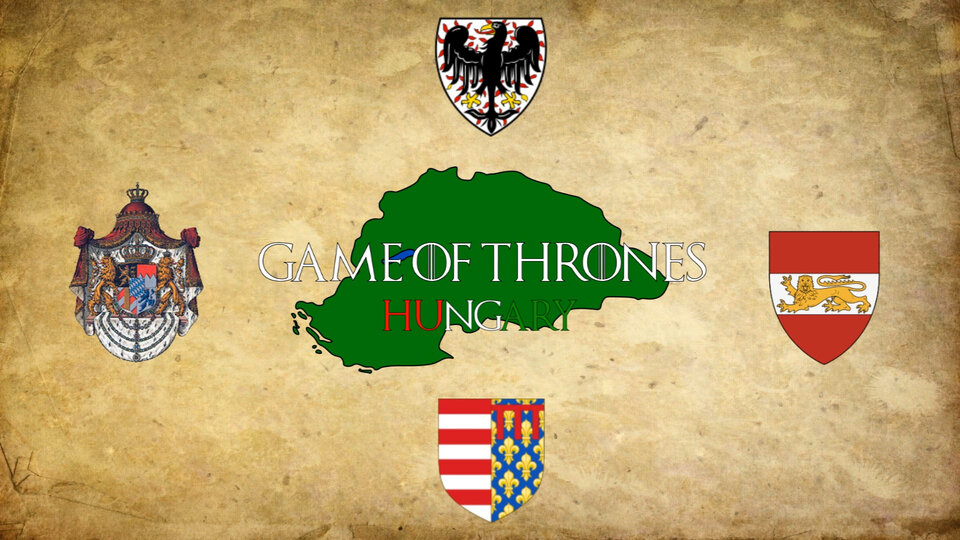Game of Thrones: Interregnum in Hungary

Most people think that history is boring, but it is not, especially if you like fantasy series like the Game of Thrones. In this article, we will present you with one of the most interesting time periods in Hungarian history. This is the story about the end of a dynasty and the rise of another one. Let’s dive right into Hungarian history by jumping to the beginning of the 14th century.
In the year 1301, the last male heir of the house of Árpád, András III died and left only one child behind, Erzsébet. At this time, women could not be the rulers of the kingdom so a further relative had to be chosen for the throne. According to the customary law of the time, the king of Hungary could only be legitimate if all three conditions were met. First, the king had to be crowned with the Holy Crown. Second, the ceremony had to take place at Székesfehérvár. Third, the coronation had to be performed by the archbishop of Esztergom.
The candidates
The first candidate was Charles I of Hungary, who was already in the kingdom at the death of András III. He immediately headed to Esztergom where he was crowned by the archbishop with a substitute crown. This was not a legitimate coronation and the oligarchs did not recognise it because they feared that Hungary would become a vassal of the Papal State. The oligarchs brought a new candidate, Wenceslaus III of Bohemia. Wenceslaus’ coronation was not legitimate either because the archbishop of Esztergom supported Charles, but he had the Holy Crown. There was a third candidate, Otto Wittelsbach, who was the successor of Wenceslaus.
Fight for the throne
Wenceslaus ruled the country between 1301 and 1304, but he lost his supporters rather quickly. Upon his visit, his father deemed his son’s position hopeless, therefore, he ordered him back to Bohemia. Later, Wenceslaus III became the king of Bohemia. However, he did not give the Holy Crown to Charles but rather to Otto Wittelsbach. He was crowned as the next king of Hungary while still missing the support of the archbishop and the church. He ruled between 1305 and 1307, but he lacked any kind of support. To better his reputation as a king, he decided to marry the daughter of László Kán, the voivode of Transylvania. But Otto was captured by László who deprived him of the Holy Crown. Later, he released Otto from captivity, who returned to Bavaria.
Charles’ support grew and he was crowned for a second time at Buda, but this was still not legitimate. At last, László Kán was excommunicated and had to give back the Holy Crown. Following that, in 1310, Charles I was crowned for the third time and he became the legitimate king of Hungary.
Fight for the kingdom
Although Charles already ruled the kingdom, it took some time for him to take over the lands as some of the oligarchs initially opposed him, especially Máté Csák. Thanks to his diplomatic skills, by 1311, all the oligarchs were on the side of Charles, except for Máté Csák and László Kán. The united front lasted for a while but in 1316 many of the king’s allies revolted. Around this time, László Kán died so Charles could reclaim Transylvania. Amidst the turmoil, slowly but surely Charles gained ground and he got the upper hand. By 1318, most of the country was under the control of Charles, but the lands of Máté Csák were only returned after his death in 1321. This was the time when Charles I of Hungary finally solidified his rule in the country as the sole king.
Source:




